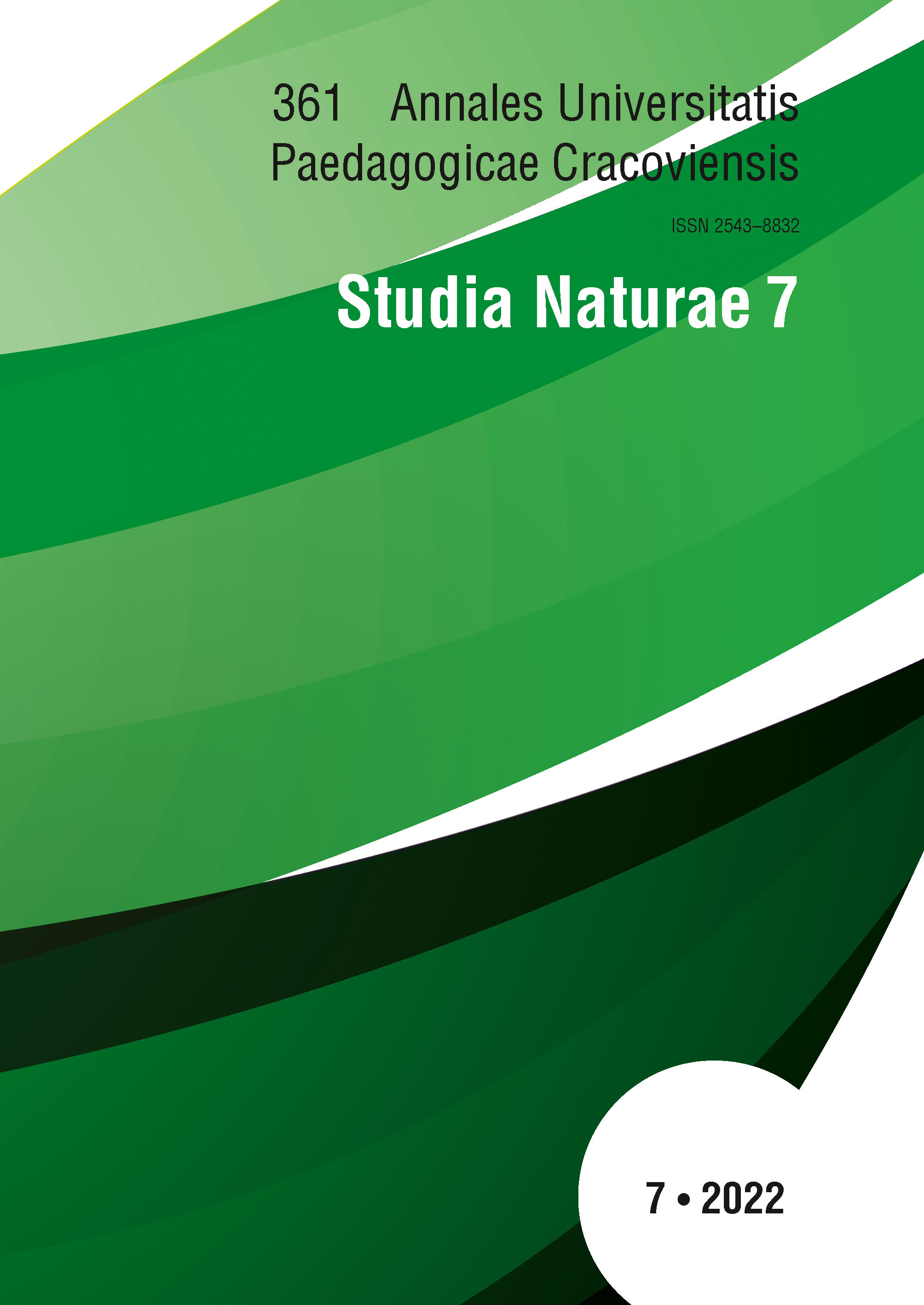Water trophy assessment of the cooling system of the “Dolna Odra” power plant on the basis of algae indicator organisms
DOI:
https://doi.org/10.24917/25438832.7.9Keywords:
after-cooling water, indicator species, phytoplankton, saprobic index, water trophy of the powerplant’s hydrological infrastructureAbstract
The paper presents the results of water trophy assessment from various stations of the cooling system of the “Dolna Odra” (Poland) power plant. The assessment was made based on the indicator phytoplankton species collected four times at four sites located in different parts of the hydrological system cooling the technical infrastructure of the power plant. The sites were characterised by water with a natural temperature for individual seasons, as well as by thermals changed as a result of the discharge of cooling waters. For each site, the saprobic index was calculated based on indicator species.
The analysis showed that the changes in trophic conditions, both in waters with changed thermals and in waters not subject to the influence of after-cool waters, are not subject to significant changes. The waters of all studied sites in the analysed periods of the year should be classified according to Sladeček and Sládečková (1996) to the waters of the β-mesosaprobic zone, with a saprobic index value ranging from 1.51 to 2.50 (average S = 2.0). This zone is characterised by the course of biochemical processes under aerobic conditions, as a result of which complete oxidation of the intermediate products of decomposition of organic compounds takes place.
Downloads
Metrics
References
AlgaeBase database. 2022. https://www.algaebase.org/
Burchardt, L. (1977). Zmiany w składzie fitoplanktonu Jeziora Pątnowskiego odbiornika wód podgrzanych i ścieków z cukrowni (1972/1973) (Changes in the phytoplamkton of the Pątnowskie Lake, collector of warmed water and sewagefrom the sugar plant (1972/1973)). Poznań, Universytey A. Mickiewicza, Seria Biologica, 8, 1–117. [In Polish]
Burchardt, L., Łastowski, K., Szmajda, P. (1994). Różnorodność ekologiczna a bioindykacja. In: Burchardt L. (eds.), Teoria i praktyka badań ekologicznych. Idee Ekologiczne. Ser. Szkice, 4(3), 27–43.
Cohn, F. (1875). Untersuchungen über Bakterien II. Beitrage zur Biologie der Pflanzen, 1, 141–207.
Cohn, F. (1853). Űber lebende Organismen im Trinkwasser. Jahresbericht der Schlesischen Gesellschaft für Vaterländische Kultur, 31, 91.
Kawecka, B., Eloranta, P. V. (1994). Zarys ekologii glonów wód słodkich i środowisk lądowych. Warszawa: Wyd. PWN. [In Polish]
Kolkwitz, R., Marsson, M. (1908). Ökologie der pflanzlichen Saprobien. Berichte der Deutschen Botanischen Gesellschaft, 26A, 505–519.
Kolkwitz, R., Marsson, M. (1909). Ökologie der tierischen Saprobien. Internationale Revue der gesamten Hydrobiologie und Hydrographie, 2, 126–152.
Liebmann, H. (1951). Handbuch der Frischwasser – und Abwasserbiologie. I, 1–539; II. Heft 1–3. München: R. Oldenburg. [In German]
Liebmann, H. (1962). Handbuch der Frischwasser – und Abwasserbiologie. I–2. Jena: G. Fischer Verlag. [In German]
Marvan, P., Pribil, S., Lhotsky, O. (1979). Algal assay and monitoring eutrophication. Stuttgart: Schweizerbart´sche Verlagsbuchhandlung. [In English]
Mez, C. (1898). Mikroskopische Wasseranalyse. Berlin: J. Springer Verl. [In German]
Ostrowska, M. 2012. Characteristics of indicatory algae against the background of physical-chemical conditions in small water bodies on the example of an excavation in Biestrzynnik. Ecological Chemistry and Engineering. A, 19(10), 1279–1288.
Pantle, R., Buck, H. (1955). Die biologische Überwachung der Gewāsser und die Darstellung der Ergebnisse. GWF [In German]
Sládeček, V., Sládečková, A. (1996). Atlas vodních organismů se zřetelem na vodárenství, povrchové vody a čistírnych odpadních vod. Praha: VŠCHT. [In Czech]
Starmach, K. (1955). Metody badania planktonu. Państwowe Wydawnictwo Rolnicze i Leśne. [In Polish]
Starmach, K. (1989). Plankton roślinny wód słodkich. Metody badania i klucze do oznaczania gatunków występujących w wodach Europy Środkowej. Warszawa-Kraków: PWN. [In Polish]
Starmach, K., Wrobel, S., Pasternak, K. (1976). Hydrobiologia. Limnologia. Warszawa: PWN. [In Polish]
Turoboyski, L. (1967). Powiązania chemizmu wód zanieczyszczonych z występowaniem organizmów wskaźnikowych na przykładzie badań rzeki Warty w rejonie Czestochowy (The relations between polluted water chemism and the occurrence of indicator organisms in the river Warta in the Częstochowa region). Acta Geologica Polonica, 1–19. [In Polish]
Turoboyski, L. (1969). Chemiczno-biologiczne badania nad wpływem wód podgrzanych z elektrowni w Skawinie na Wiśłe i Skawinkę (Chemical and biological investigation on the effect of water from the electricity works at Skawina on the rivers Vistula and Skawinka). Materiały Badawcze Instytutu Gospospodarki Wodnej, 4(2), 23–65. [In Polish]
Turoboyski, L. (1970a). Listy organizmów wskaźnikowych najczęściej spotykanych w wodach powierzchniowych Polski. Materiały badawcze. IGW. [In Polish]
Turoboyski, L. (1970b). Podstawowe metody analitycznych pomiarów jakości wód powierzchniowych i ścieków. Cz. II, Materiały badawcze. IGW. [In Polish]
Turoboyski, L. (1973). Organizmy wskaźnikowe i ich zmienność ekologiczna. The indicator organisms and their ecological variability. Acta Hydrobiologica, 15(3), 259–274.
Turoboyski, L. (1976). Atlas organizmów wskaźnikowych do oceny wód powierzchniowych. Skrypty Akademii Rolniczo-Technicznej w Olsztynie. Olsztyn: Wyd. AR-T [In Polish]
Turoboyski, L. (1979). Hydrobiologia techniczna. Warszawa: Wyd. PWN. [In Polish]

